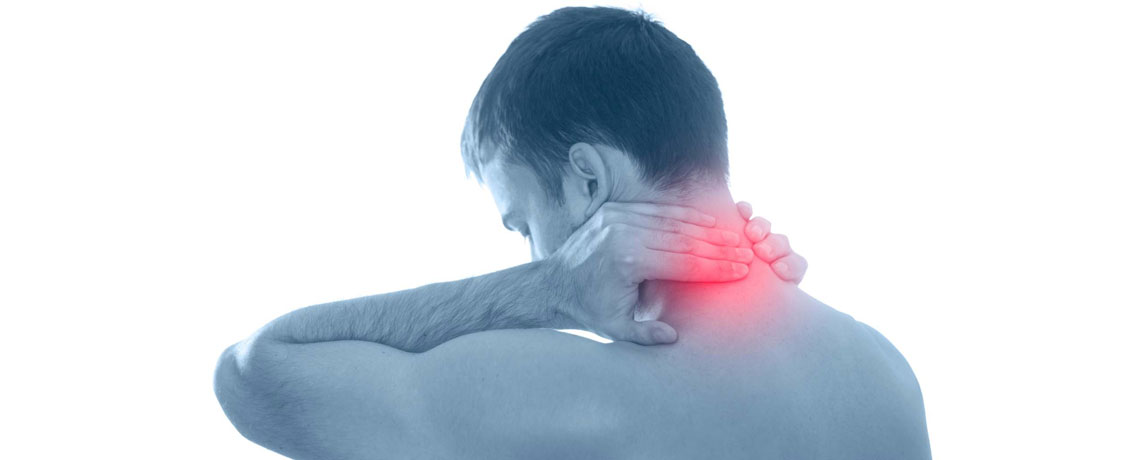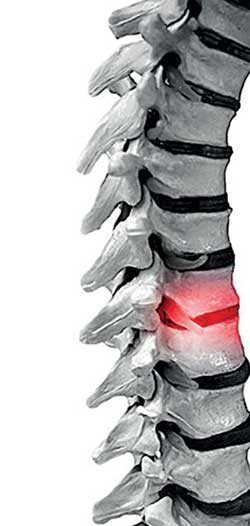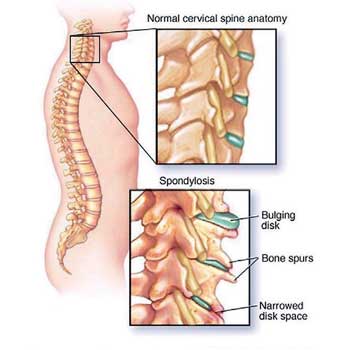14 Dec 2017 - {{hitsCtrl.values.hits}}

 We hear the medical term spondylosis which I believe is a difficult word to pronounce and understand. Many patients talk about having spondylosis although a very few understand its true meaning. I will explain in simple terms what spondylosis is and what the patient could do to avoid problems related to this condition.
We hear the medical term spondylosis which I believe is a difficult word to pronounce and understand. Many patients talk about having spondylosis although a very few understand its true meaning. I will explain in simple terms what spondylosis is and what the patient could do to avoid problems related to this condition.
First of all, “spondy” refers to the spine and ‘’losis” means a problem. Therefore, this term spondylosis is a problem related to the spine. This doesn’t necessarily mean that it should be the neck region. We joint specialists use this term to describe mainly wear and tear changes of the spine. Cervical in medical language is the neck, so cervical spondylosis is usually a bit of wear and tear related issues in the neck part of the spine. And then, there are also problems of the lower part of the spine, which is named lumbar spondylosis. Lumbar refers the lower part of the spine. This is where you can feel your lower back curvature.
Cervical spondylosis – how do I feel?
Patients with cervical spondylosis have symptoms such as neck pain, stiffness, creaky sounds, pain in the shoulder muscle or even pain shooting down the arms towards hands. Lifting heavy objects, turning the head towards one side or abnormal sleeping postures might aggravate pain. Sometimes the pain is felt near one side of the neck only, which might confuse both the patient as well as the doctor.
The neck has many bones called the vertebrae which are separated by soft discs. The discs allow the bones to move upon each other. They also do a bit of shock absorption. Somehow the vertebral bones usually do not touch each other. There are small holes in between the bones, on either side, through which nerves spring out and supply the arms. These nerves are at high risk of been crushed as a result of spondylosis.
 Various reasons cause the neck bones to undergo wear and tear. Ageing is one factor. A thing called inflammation can cause wear and tear in the young. With wear and tear your body makes a desperate attempt to repair the neck. This repairing mechanism isn’t at all a proper one, and ultimately the body deposits calcium ‘Thrones’ over unnecessary areas. These calcium spurs or thrones are called osteophytes and can press over certain nerves and cause pain.
Various reasons cause the neck bones to undergo wear and tear. Ageing is one factor. A thing called inflammation can cause wear and tear in the young. With wear and tear your body makes a desperate attempt to repair the neck. This repairing mechanism isn’t at all a proper one, and ultimately the body deposits calcium ‘Thrones’ over unnecessary areas. These calcium spurs or thrones are called osteophytes and can press over certain nerves and cause pain.
Also cervical spondylosis leads to friction and therefore disrupts the smooth sliding movements of the neck bones. This can cause neck pain as well.
Neck regions gives rise to numerous nerves. These are like long roots of a tree which extend all the way up to your fingertips. If these nerves are squeezed at their origin, the resulting pain can be felt all over the neck and arm region.
Surgery the only way out?
This is a common question. Most patients dislike the thought of getting the neck bones operated on. Therefore, I will highlight some of the remedies that could be tried before surgery is considered. But please note that patients who have very severe spondylosis definitely require surgical solutions. A delay in surgery can lead to problems with the arms, legs and even urinary /bowel continence. Surgical methods in treating spondylosis are based on the concept of removing unnecessary bony or disc particles that cause pressure on structures. There are two ways of removal; namely the anterior approach where the surgeon operates on the front part of the neck and posterior approach. In selected patients, surgery ultimately leads to a cure. Most of the other remedies described below are meant for patients with mild to moderate spondylosis.
Pros and cons of using neck collars
For decades there had been a debate on whether a neck collar helps in spondylosis. A soft collar usually doesn’t limit movement of the neck and usually isn’t helpful at all. Hard collars limit neck movement, but these reduce tone in the neck muscles in the long run. So discontinuation might lead to neck stiffness.
Some of the spondylosis symptoms disappear over a few years, according to research. A few patients might have permanent pain.
Medicine
There are various types of medicine meant for spondylosis. NSAIDS (Non steroid anti inflammatory drugs) are very useful for short term pain relief. These mainly act on muscles that are affected through cervical spondylosis.
Muscle relaxants help to ease the tension and are best preferred during the night. A drug category named tricyclic anti-depressants, which were earlier used to treat depression, are also useful with some patients. Another type of drug called gabapentin is useful especially if the consultant detects pain originating from the nerves.
Lifestyle modification and ergonomics
I come across patients who are keen on lifestyle modifications for joint related issues. Similarly, ergonomics, especially work place ergonomics matter a lot regarding spondylosis. So what is ergonomics? It is an applied science concerned with designing and arranging things people use, so that the people and things interact most efficiently and safely.
 For cervical spondylosis I will explain a few things that you might find useful. First of all, take half hour breaks if you are doing an office based job. Standing and walking a few steps is very beneficial during these breaks. When seated make sure your neck is directly above your shoulders. It shouldn’t lean/bend forward. Adjust the seat height, so that your face is in front of the screen, if you are operating a computer. Also your feet should rest on the floor. Pull behind your pelvis/buttock, so that it touches the back of your seat. Ideally the seat should have arm rests which are adjustable.
For cervical spondylosis I will explain a few things that you might find useful. First of all, take half hour breaks if you are doing an office based job. Standing and walking a few steps is very beneficial during these breaks. When seated make sure your neck is directly above your shoulders. It shouldn’t lean/bend forward. Adjust the seat height, so that your face is in front of the screen, if you are operating a computer. Also your feet should rest on the floor. Pull behind your pelvis/buttock, so that it touches the back of your seat. Ideally the seat should have arm rests which are adjustable.
Bending the neck forward and at the same time rotating it might harm the tiny structures within your neck. I always promote gentle, home based, neck mobilisation exercises.
Physical modalities
Heat therapy, cold therapy, trigger point injections and trans cutaneous nerve stimulation are popular methods for treating spondylosis. Neck traction is helpful in some patients although excessive traction could lead to further disabilities. Traction is only used in mild to moderate cervical spondylosis. Neck manipulation is also done by some practitioners although it’s dangerous in patients with fractures and dislocations.
Before trying out remedies for cervical spondylosis it is always advised to meet and discuss with a joint specialist regarding the intensity of your symptoms. A mixture of treatment modalities provide relief to many patients.
16 Apr 2024 15 minute ago
16 Apr 2024 17 minute ago
16 Apr 2024 17 minute ago
16 Apr 2024 37 minute ago
16 Apr 2024 1 hours ago